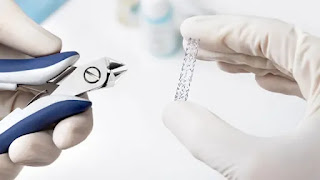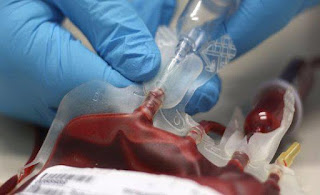Shape-Shifting Solutions: The Marvelous World of Nitinol Medical Devices
In the realm of medical technology, innovation knows no bounds. One remarkable advancement that has transformed the landscape of healthcare is the use of Nitinol medical devices. These ingenious creations, made from a unique shape memory alloy, have proven to be a game-changer in numerous medical applications. Let's dive into the marvelous world of Nitinol and explore how its shape-shifting properties are revolutionizing the field of medicine.
Understanding Nitinol:
Nitinol is a fascinating alloy composed of nickel and titanium, which is where its name originates (Nickel Titanium Naval Ordnance Laboratory). This shape memory alloy exhibits two distinct properties that set it apart from traditional metals: superelasticity and shape memory. These properties allow Nitinol to undergo significant deformation and then return to its original shape when exposed to specific stimuli, such as temperature changes or mechanical forces.
Shape Memory Property:
One of the most captivating features of Nitinol is its shape memory property. In its original form, Nitinol is deformable like any other metal. However, once it is shaped at a specific temperature, it can "remember" that form. Upon heating or cooling to a critical temperature known as the "transition temperature," Nitinol swiftly regains its pre-set shape. This shape memory capability makes Nitinol ideal for various medical applications.
Superelasticity:
Nitinol also exhibits superelasticity, often referred to as "pseudoelasticity." In this state, Nitinol can undergo significant deformation and return to its original shape when the external force is removed. Unlike conventional metals that would undergo permanent deformation, Nitinol's superelasticity makes it highly resilient and ideal for devices that experience stress or strain during use.
Marvelous Applications in Medicine:
The exceptional properties of Nitinol have led to its wide adoption in various medical devices, including:
Stents: Nitinol stents are used to treat blocked or narrowed blood vessels. They are inserted in a collapsed form and, once positioned in the target area, are expanded to restore blood flow. The shape memory property of Nitinol enables self-expansion, ensuring proper placement and reducing the risk of complications.
Guidewires: Nitinol guidewires are employed to navigate through blood vessels during minimally invasive procedures. Their superelasticity allows them to withstand bending and flexing without permanent deformation, guiding medical instruments precisely to their destination.
Orthopedic Devices: Nitinol is utilized in orthopedic implants, such as bone staples and rods. These devices offer flexibility and a close fit to the anatomy, allowing for optimal healing and patient comfort.
Dental Instruments: Nitinol's shape memory property is harnessed in dental applications like orthodontic archwires that provide continuous gentle force to align teeth gradually.
Neurovascular Devices: Nitinol is also used in the construction of neurovascular devices, such as flow diverters and aneurysm occluders. Its superelasticity enables these devices to conform to complex vessel structures and reduce the risk of complications.
Conclusion:
Nitinol medical devices represent an astounding convergence of materials science and healthcare. The shape-shifting solutions offered by this shape memory alloy have revolutionized the way medical conditions are diagnosed and treated. From stents and guidewires to orthopedic implants and dental instruments, Nitinol's unique properties have opened up new avenues for safer, more precise, and minimally invasive medical interventions. As technology continues to advance, we can only imagine the limitless potential of Nitinol in shaping the future of medicine, bringing hope and healing to countless patients worldwide.




Comments
Post a Comment